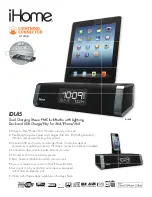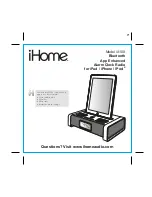
E-53
Maintenance and Troubleshooting
Engine Noise Suppression
Interference from the noise generated by the electrical systems of engines
is sometimes a problem with radios. The VHF650 has been designed to be
essentially impervious to ignition noise and alternator noise. However, in
some installations it may be necessary to take measures to further reduce
the effect of noise interference. The VHF650 radio DC battery wires, antenna
lead, and accessory cables should be routed away from the engine and
engine compartment, and from power cabling carrying high currents. In
severe cases of noise interference, it may be necessary to install a noise
suppression kit. Contact the dealer where you purchased the radio for more
information.
Regulations and Safety Warnings
Maritime radio services operation
Warning!
This transmitter will operate on channels/frequencies that have
restricted use in the United States. The channel assignments include
IUHTXHQFLHVDVVLJQHGIRUH[FOXVLYHXVHRIWKH86&RDVW*XDUGXVHLQ
Canada, and use in international waters. Operation on these frequencies
without proper authorization is strictly forbidden. See pages 53 through 58
for a list of available channels and their uses. If you are still not certain which
channels to use, see the FCC maritime radio page at the FCC website (http://
wireless.fcc.gov/marine/) or contact the FCC Call Center at 1-888-CALL-
FCC. For individuals requiring a license, such as commercial users, you
VKRXOGREWDLQDOLFHQVHDSSOLFDWLRQIURP\RXUQHDUHVW)&&¿HOGRI¿FHIRU86
users) or Industry Canada (for Canadian users).
Basic radio guidelines
You should familiarize yourself with the rules on marine radios and be
aware of which rules apply to your boat. Complete guidelines for all ship
and marine radio types can be found at the US Coast Guard website under
the topic
Radio Info for Boaters
(the direct link is
http://www.navcen.uscg.
gov/marcomms/boater.htm
). Here are a few guidelines that affect nearly all
boaters.
•
If you have a VHF radio on your boat, you must maintain a watch on
channel 16 (156.800 MHz) whenever the radio is not being used to
communicate. Effective from 2004, if a radio is carried, it must be turned
on and set to channel 16 whenever your vessel is underway.
•
If you hear a distress call, wait a few minutes to let a shore station or
Coast Guard vessel respond. If no other station has responded after 5
minutes, you must respond to the distress call.
•
Do not make false mayday or distress calls as a prank or to test your
radio. (This is essentially like making a false 9-1-1 call; you may be
VXEMHFWWR¿QHV
Содержание VHF650
Страница 1: ......
















































